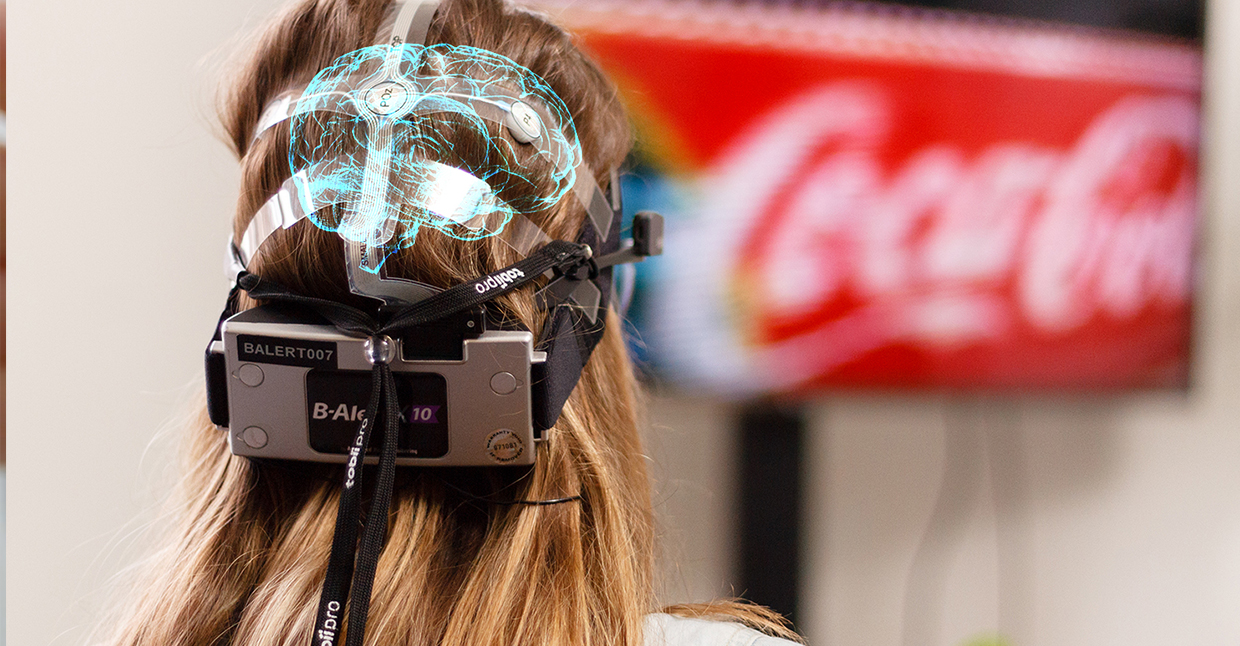
A strong brand image is crucial to establish a place in the customer's choice set. As consumers reach their choices intuitively and automatically in many categories, they are very brand image-driven. Brands with a strong brand image have a clear advantage: they stand out more quickly and are more likely to be chosen.
But what makes a brand image attractive? And how can you measure it in a reliable way? That’s exactly what we’ll discuss in this blog.
A brand is an associative network in the shopper's brain
Brands are branched out in our brain as associative networks. These can be very simple visual associations (Amstel is red), to more functional associations (Amstel is tasty) to emotional and symbolic associations (Amstel is friendship).
This explains why, when we think of Amstel, we also automatically tend to think of the color red, our taste judgments and the social context in which it is consumed. These associations combine to form a brand image. Sounds simple, but how do you actually measure that image?
The problem with traditional brand image research
The classic way to research brand image is childishly simple: just ask it. A seemingly attractive method because, after all, questionnaires allow you to have nearly every brand attribute evaluated.
While consciously surveying brand perception unquestionably yields an answer, the question is whether this answer is the most accurate reflection of what customers really think of your brand. In fact, conscious questioning is hampered by three problems:
-
Brand image exists partly unconsciously. People are only to a lesser extent aware of the associations in their minds, even when those associations have a major impact on our buying behavior. This is particularly the case with emotion-driven and low-involvement products.
-
Social desirability. Respondents are good at reading "between the lines" of the survey and like to answer in line with what the survey seems to want to measure. As a result, we tend to claim that we strongly associate a brand with a characteristic that is overwhelmingly important to that brand, even when in reality that association is not so strong. We saw an example of this in this blog about the effect of "less plastic" claims on packaging: these have been shown to unconsciously actually damage sustainability perceptions.
-
Mindset. When respondents fill out a questionnaire, they answer from a more rational mindset than the mindset they would actually have when purchasing a product. This explains the well-known phenomenon that traditional research methods overestimate the influence of rational brand characteristics (for example: people indicate that they consider the 'less sugar' characteristic of a soft drink to be the most important, while in reality this plays a minimal role) and underestimate emotional characteristics (for example: people indicate that they are not influenced by the cheerful music in the advertising, but this turns out to be the case).
Researching brand image with neuromarketing: the Implicit Association Test (IAT) and Intuitive Response Test (IRT)
In recent years, traditional market research has made room for neuromarketing methods that focus on the unconscious. More and more brands are using these research methods that map the strength of associations rather than consciously questioning brand image. These methods measure the strength of an association based on processing speed in the brain. We at Unravel also use this method to map the image of our clients through brand image research.
What all these methods have in common is that respondents classify combinations of brands and attributes under time pressure. The time pressure not only results in a more intuitive response from the respondent, but the response time in itself also contains valuable information. Indeed, response time turns out to be telling when it comes to the strength of an association: the more strongly we associate something (e.g., Coca-Cola and happiness), the faster we can process these thoughts simultaneously. Reaction time methods such as the Implicit Association Test (IAT) and Intuitive Response Test (IRT) measure this reaction time.
Below we list the most common uses of reaction time methods in brand image research:
1. Measure and monitor brand image
Neuromarketing makes it possible to quantitatively measure how the target audience actually perceives your brand. That way, you can test your intended brand image, as well as map the same characteristics among competitors. By repeating this research periodically, you gain insight into how brand image develops over time within the market.
2. Discover which attributes of your brand image lead to success
Even if your brand scores perfectly on all components of the intended brand image, this does not mean that every attribute is equally important. It is possible to measure which attributes are actually leading in conversion from non-customer to customer. In doing so, we conduct the research among two groups: customers and non-customers. By analyzing where brand associations overlap and differ, we gain insight into the crucial associations to get someone to convert.
3. Discover clusters of connected brand image attributes
When you examine a large number of associations, it is possible to analyze how attributes are interrelated with each other and with key marketing KPIs. That way, you gain insight into which associations you can capitalize on to positively influence a desired end variable such as purchase intention, NPS or willingness to pay.
At Unravel, we regularly perform brand image research for international brands. Curious about how we can help your brand with improving your brand image through brand image research? Don’t hesitate to contact our Lead Consultant Tim (This email address is being protected from spambots. You need JavaScript enabled to view it.).






